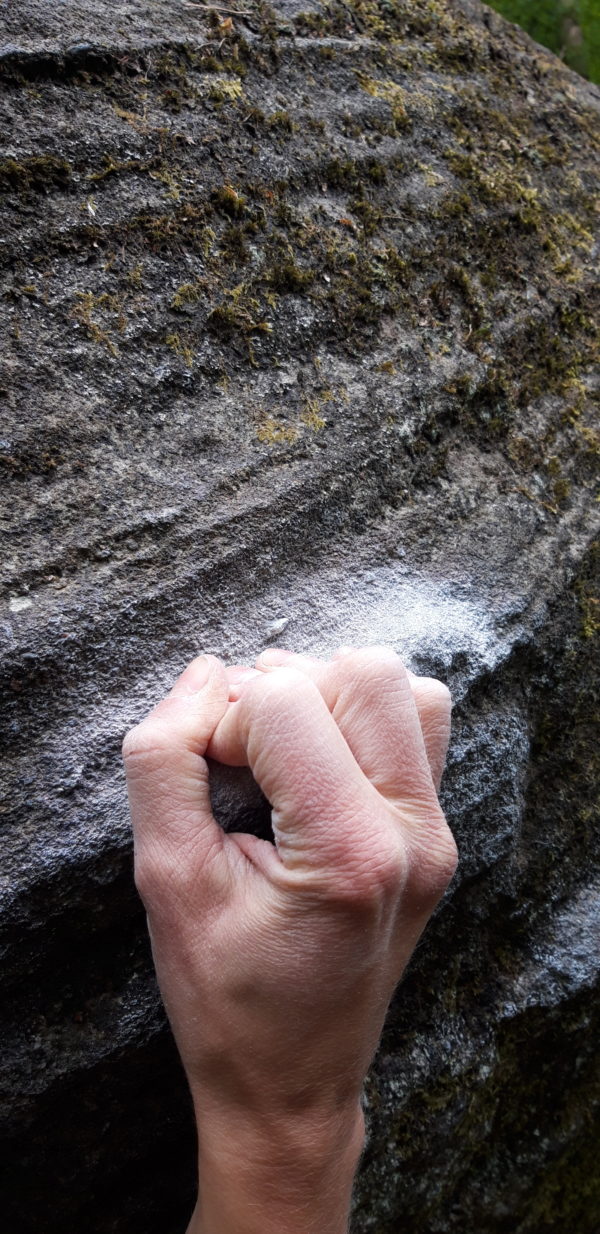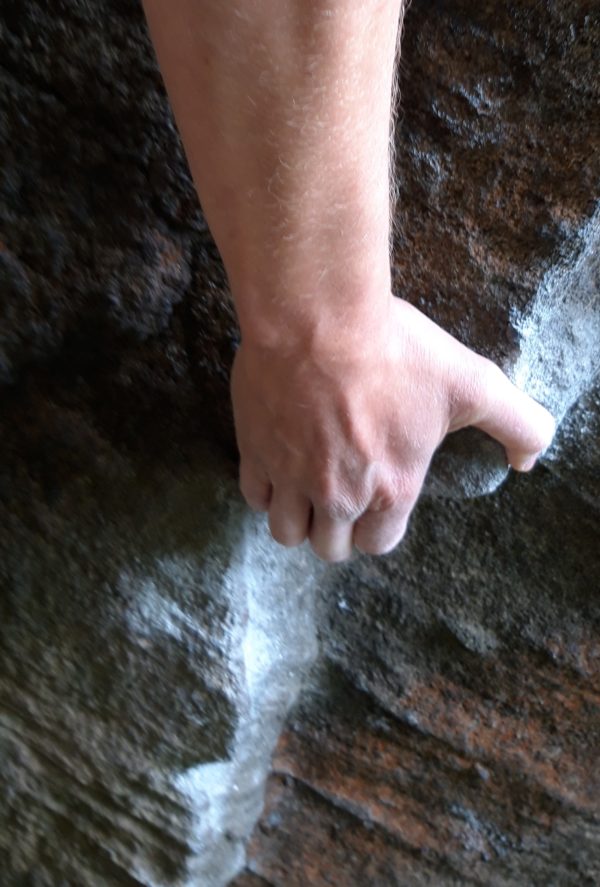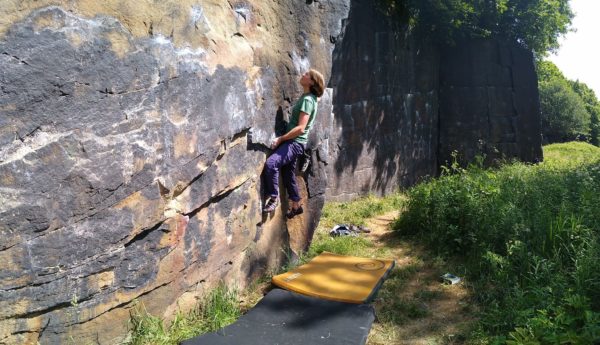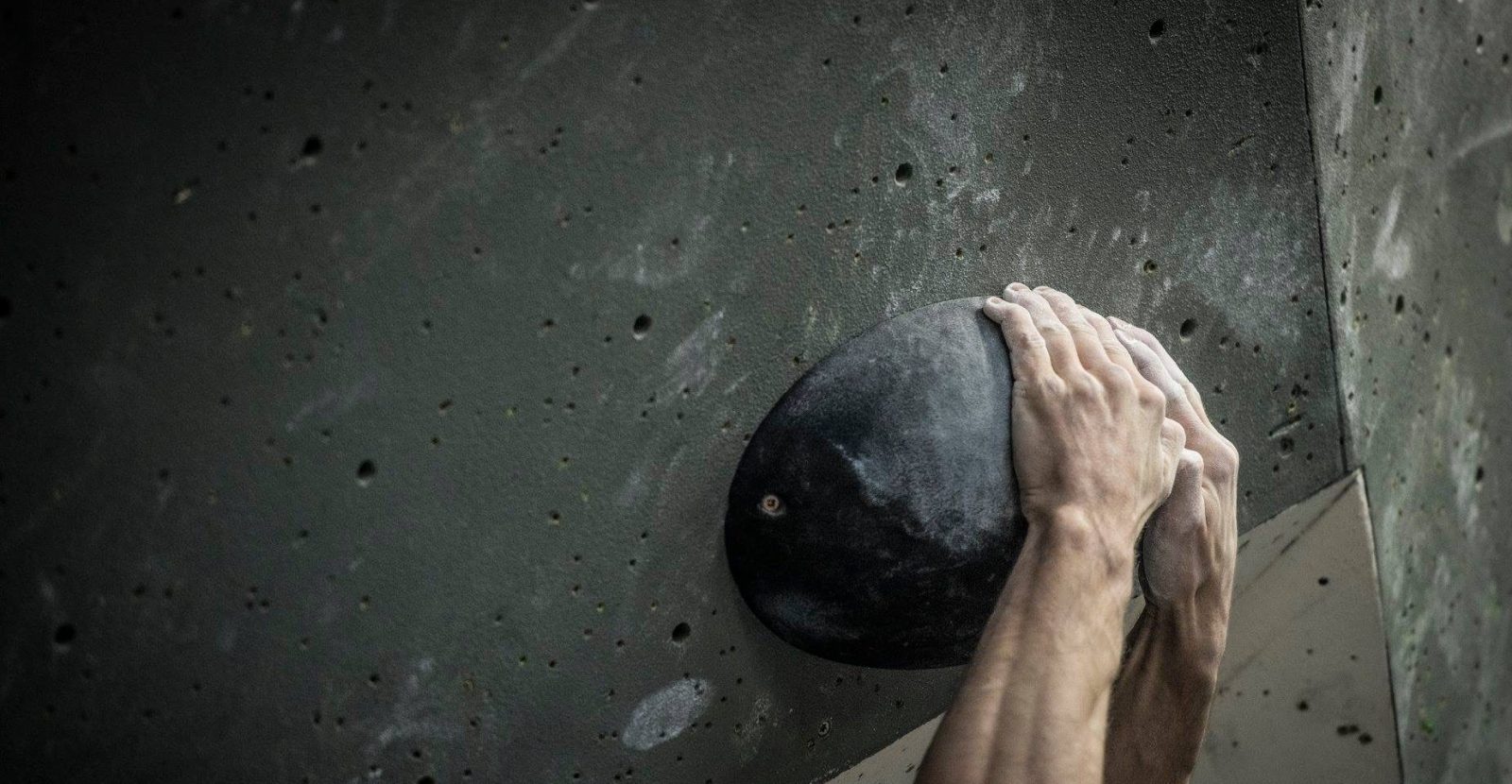I was in the garden the other day carrying around some rather large plant pots when I started to feel that familiar feeling in my forearms. That which you get on a climb, forearm pump. I looked down at my hand that were holding underneath the rim of the plant pot, only to notice that I had been using an undercut crimp on the plant pot. For those of you that are not familiar with hand hold terms I will discuss this later. The important point I got from this is that handholds are everywhere and we can use them all for training. Not just for increasing strength (I know I could feel my arms after carrying all those plant pots). But more importantly practicing the best positions to get the most out of the holds. Often people think that it’s really important to pull very hard on a hold but it’s surprising how lightly you can actually hold on and your hands still stick. Its all about getting your hands and body in the right position. By doing this and not holding on so tightly we can save the energy in our arms and reduce that feeling of pump.
Exercise: Before you start make sure you warm up your forearms first with some fist to star finger movements.
Below I have described some common hand holds, see if you can find the equivalent around your home. Practice holding them. Try changing round the position of your hand and move your body around. See when then hold “feels best”, where is your hand, where your body is in relation to the hold? The more you do this the more you will be able to translate it onto the wall when you are climbing.

Crimp – This is a small edge, one that you can only get your fingertips (or less) on. Holding these not only relies on the strength of your fingers but also your body position. There are three ways to hold these. Full crimp, half crimp and open hand. A full crimp involves placing your index, middle, ring and little finger on the hold, bending the fingers back after the first joint and placing your thumb over your index finger. This grip position can feel stronger but is more prone to injury. A half crimp your index, middle and ring fingers are at approximate 90-degree angle, your little finger is on the hold, may be straight or bent. Thumb either rests at the side of your index finger or pushes against the side of the hold. Open hand is when your index, ring and middle fingers are on the hold however this time they are straighter, little finger may be on the hold depending on the shape of your hands. This grip position uses less energy but is not as stronger position as a full or half crimp.
Pocket – Similar to crimps these involve both finger strength and technique, however instead of it been a flat edge, it is a hole into the wall. Put as many fingers as you can fit into the hole (along the bottom edge). Working out which your strongest fingers are can be useful as it makes sense to use them over your weaker fingers.

Sloper – This is a very descriptive name, its basically a sloping hold. For many people these can be the most hated holds (mine included). There is two pieces of advice for holding them. Firstly, the description that I used in my footwork blog relating to smearing… Put your finger on a surface lightly and pull it along. Now push your finger down hard and slide it along. Now put your full hand on the surface… You are relying on the friction between your hand and the wall. Get as much of your hand hold as possible in contact with the hold. Secondly, keep your elbow in to the wall, as it lifts you will lose the downward force of your arm and body.

Pinch – These have two sides, and are orientated vertically, so you need to get your thumb involved. Thumb one side and fingers the other and squeeze. These holds use the most strength to hold but there are plenty of them around so you can easily build your strength by holding them.


Undercut – Undercut is when a hold is upside-down. Experiment with how strong they feel to hold. Move body in different positions. You may notice the higher you get on the undercut the easier it is to hold?
Jug – Saving the best hold until last. It’s always a lovely feeling to get to that last hold on a climb and it be a jug. A jug is hollow at the top so that you can easily fit your hand over and in to it.
How many of these have you found around your home and how can you use them to train, get creative. Can you find a pinch such as a doorway or bag of sugar? The best example of a sloper I found was a tree branch, can you find any other slopers? Then there was my undercut plant pot crimp… From all this experimentation I ask myself the question… Was I holding the plant pot in the best way or were they just very heavy plant pots?
Blog written by Vicky Jennings HCC Duty Manager & Coach
